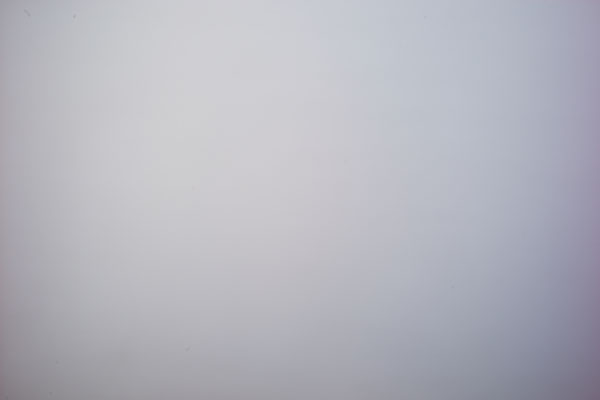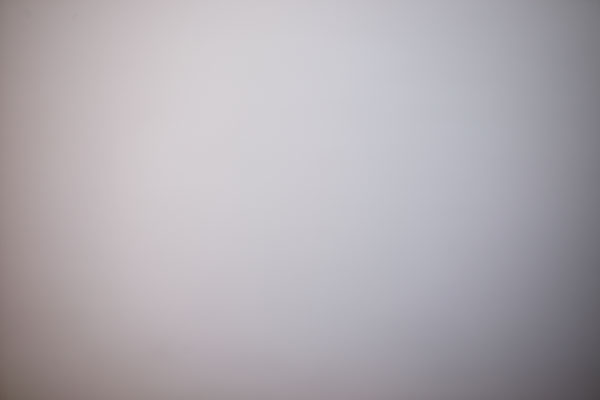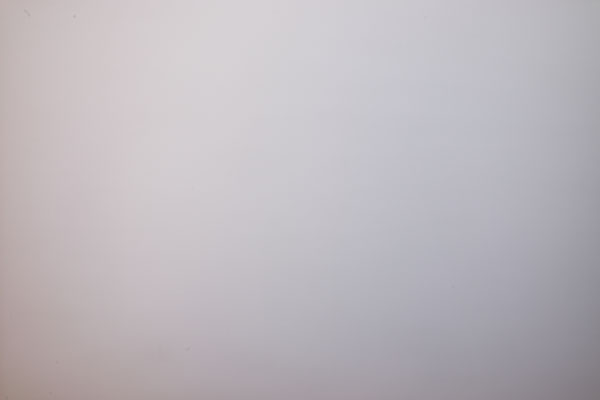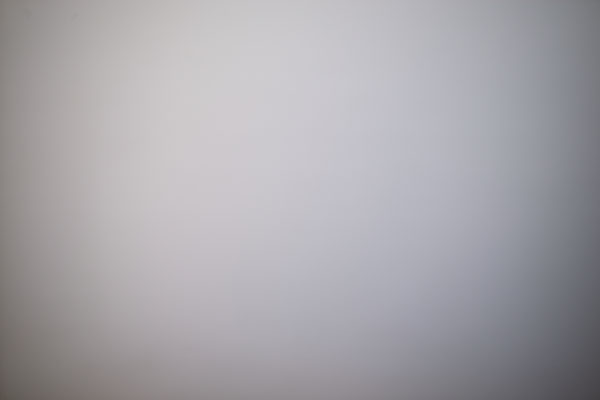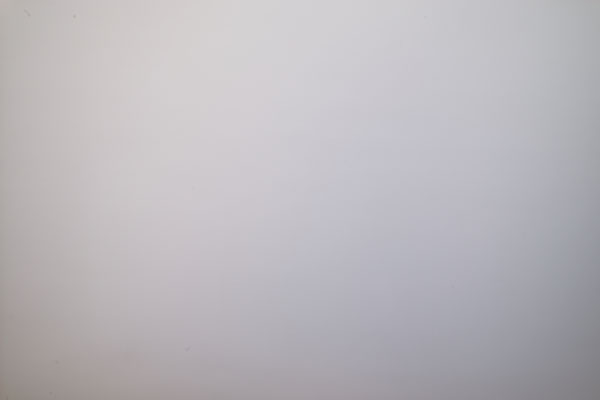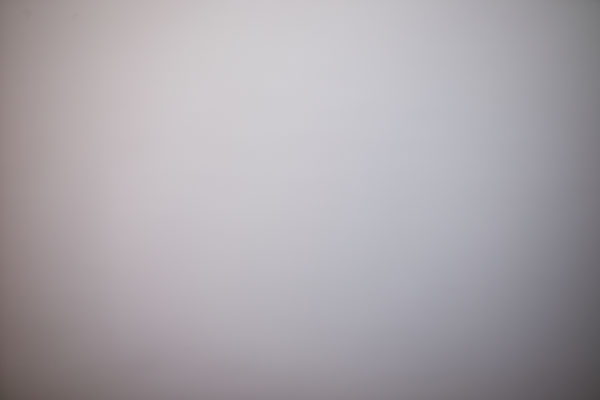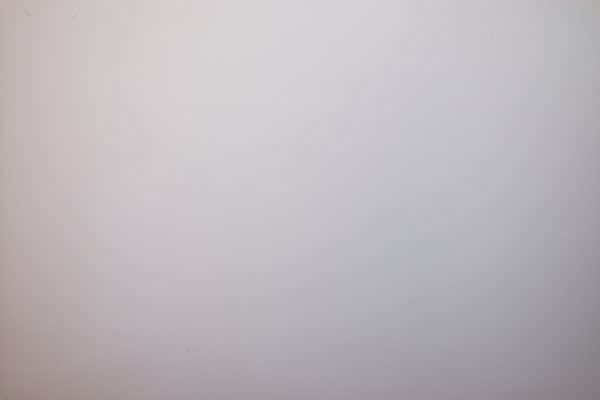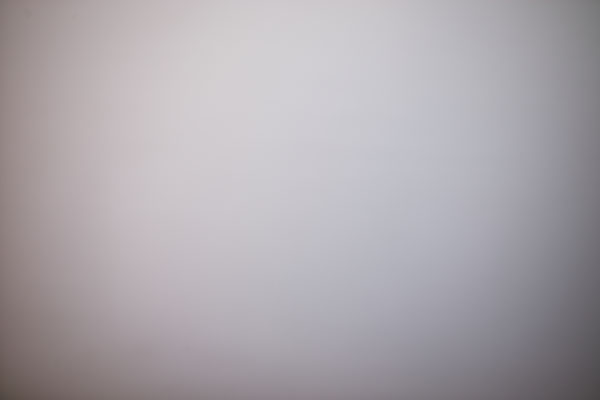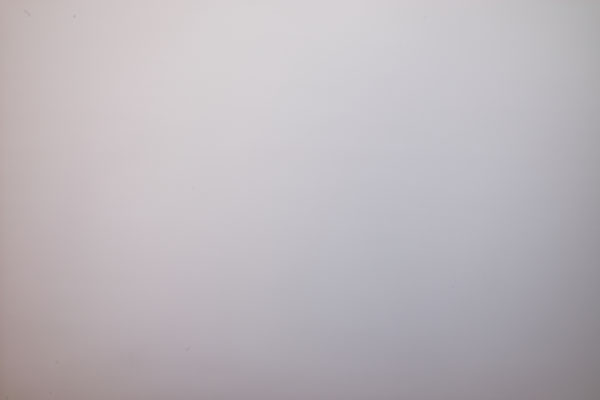Leica M (Typ 240): Leica Elmarit-M 21mm f/2.8 ASPH.
Introduction | Body with Lens Attached | Some Technical Data | Color Shading and Vignetting | Sample Images | Close-Up Behavior | Conclusions | Links | Appendix: Unpacking
Archive
On these pages you can find my first personal experiences with my M-mount lenses at the Leica M (Typ 240). This page is devoted to the Leica Elmarit-M 21mm f/2.8 ASPH. lens (model 11135; S/N 3885634), the third lens that I bought after purchasing the Leica M (Typ 240), and which replaces my Zeiss Biogon 21mm f/4.5 lens, because the latter shows serious color shading when used at the Leica M. Also note that this was my first coded lens. A previous owner sent it to Leica for coding in 2010.
All lens pages: Voigtländer 15mm f/4.5 | Voigtländer 15mm f/4.5 III | Zeiss Biogon 21mm f/4.5 | Leica Elmarit-M 21mm f/2.8 ASPH. | Leica Elmar-M 24mm f/3.8 ASPH. | Voigtländer 25mm f/4 (M39) | Minolta M-Rokkor 28mm f/2.8 | Zeiss Biogon 35mm f/2.8 | Zeiss Sonnar 50mm f/1.5 | Voigtländer 75mm f/2.5 (M39) | Leitz Hektor 85mm f/2.5 (M39) | Leitz Elmar-C 90mm f/4 | Leitz Tele-Elmarit-M 90mm f/2.8 | Leitz Tele-Elmar 135mm f/4
See also: Leica Elmarit-M 21mm f/2.8 ASPH. versus Zeiss Biogon 21mm f/4.5 - Zeiss Biogon 21mm f/4.5 - Voigtländer Super Wide Heliar 15mm f/4.5 versus Leica Elmarit-M 21mm f/2.8 ASPH. versus Leica Elmar 24mm f/3.8 - Leica Elmarit-M 21mm f/2.8 versus Leica Elmar-M 24mm f/3.8
Introduction
Since the Zeiss Biogon 21mm f/4.5 exhibited strong magenta color shading, I decided to exchange it against a Leica 21 mm lens in November 2016 in order to have less trouble and work with color shading. Via the l-camera-forum, where I posted my interest in these lenses, an owner of the Leica Elmarit-M 21mm f/2.8 ASPH. contacted me, and finally I decided to buy his used lens, although it was much more expensive than I originally was willing to spend. This lens has a maximum f-stop of 2.8 and is therefore larger and heavier than the Biogon. It also has a larger minimum distance, which leads to a lower maximum magnification (ca. 30 x) than the Biogon offers (ca. 20 x). But wide angle lenses are not "typical" close-up lenses (tele lenses work better in this respect for rangefinder cameras - see here)...
This lens (model 11135) was made in Germany between 1997 and 2010. My sample has the serial number 3885634, which means that it was built in 2000, although Leicapedia states that only silver versions (model 11897) were built that year...
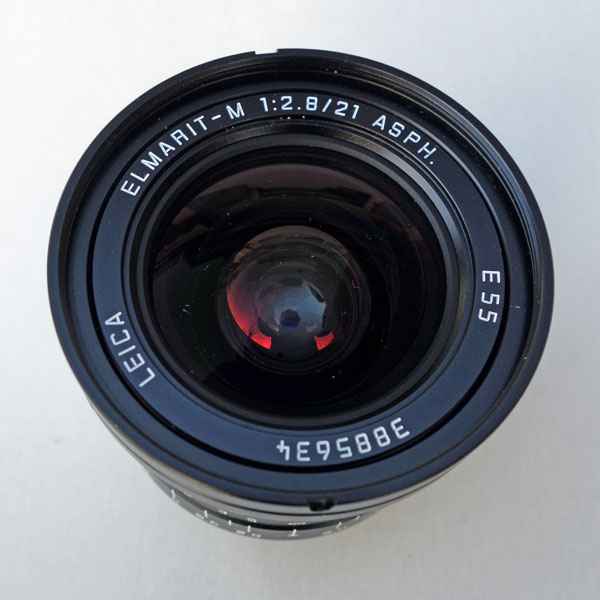 |
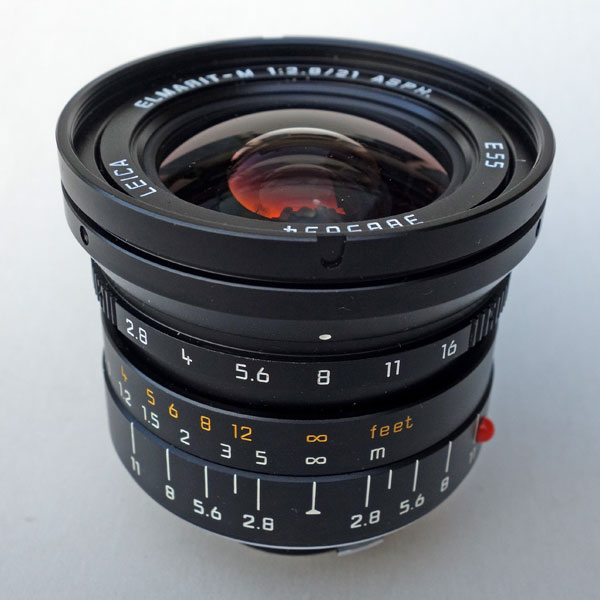 |
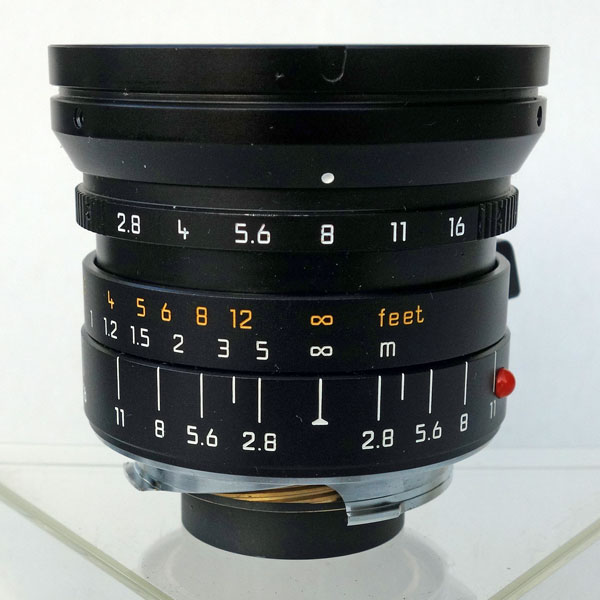 |
||
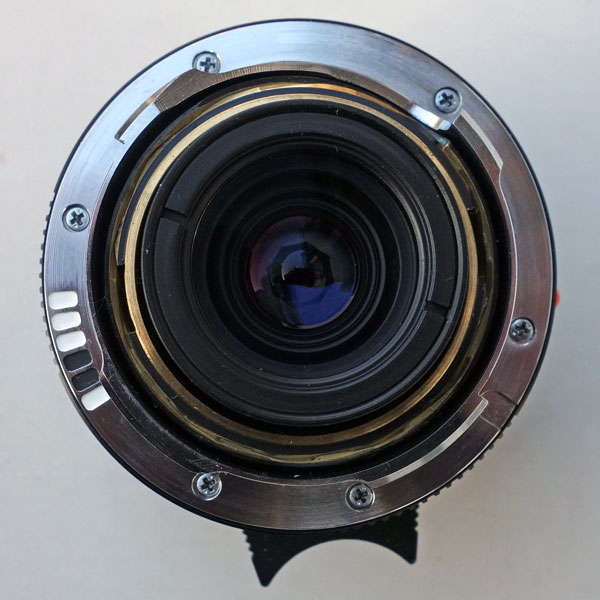 |
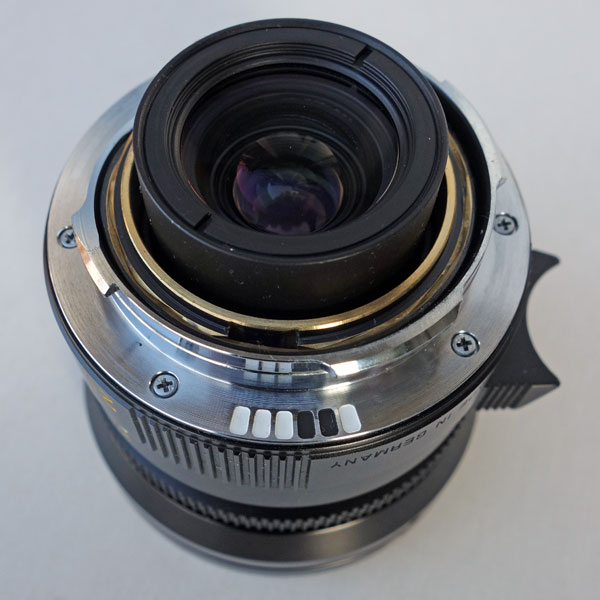 |
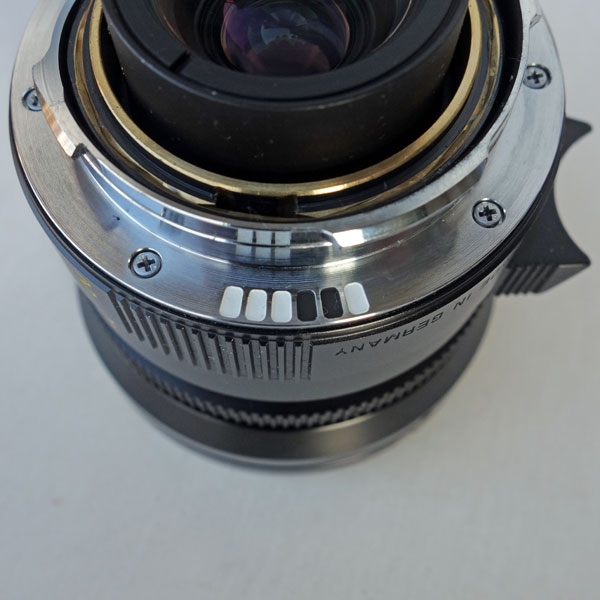 |
||
6-bit coding at the bayonet |
6- bit coding at the bayonet |
6-bit coding at the bayonet |
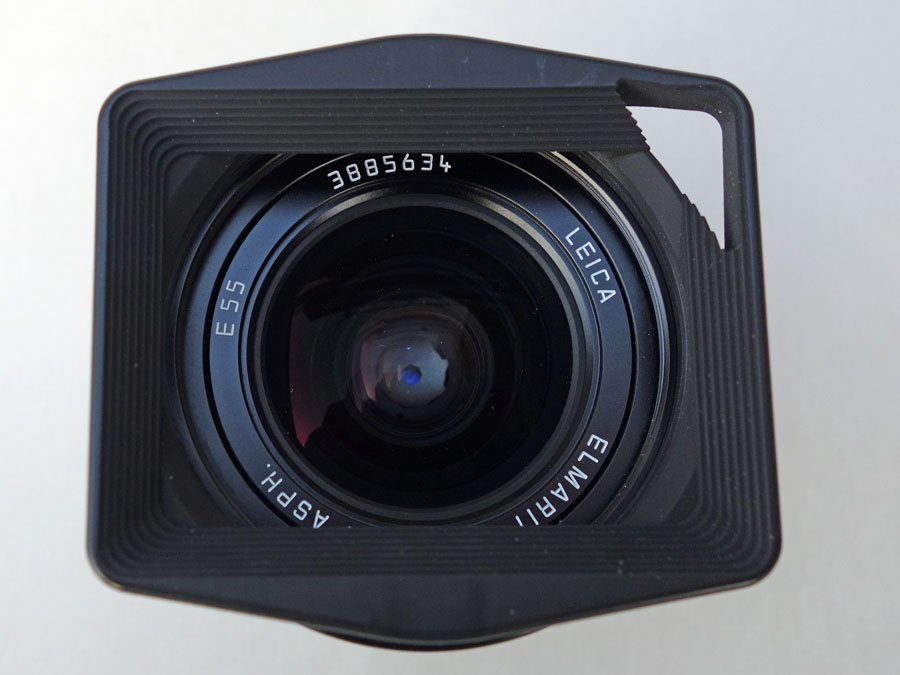 |
 |
Photos: Leica Elmarit-M 21mm f/2.8 ASPH. lens (bottom row: with lens hood)
Also note that this is my first coded lens (lens code: 011000 = 24). A previous owner sent it to Leica for coding in 2010. Therefore it should be usable with "Lens Detection" set to "Automatic" (see below).
See the appendix for photos of the unpacking.
Body with Lens Attached
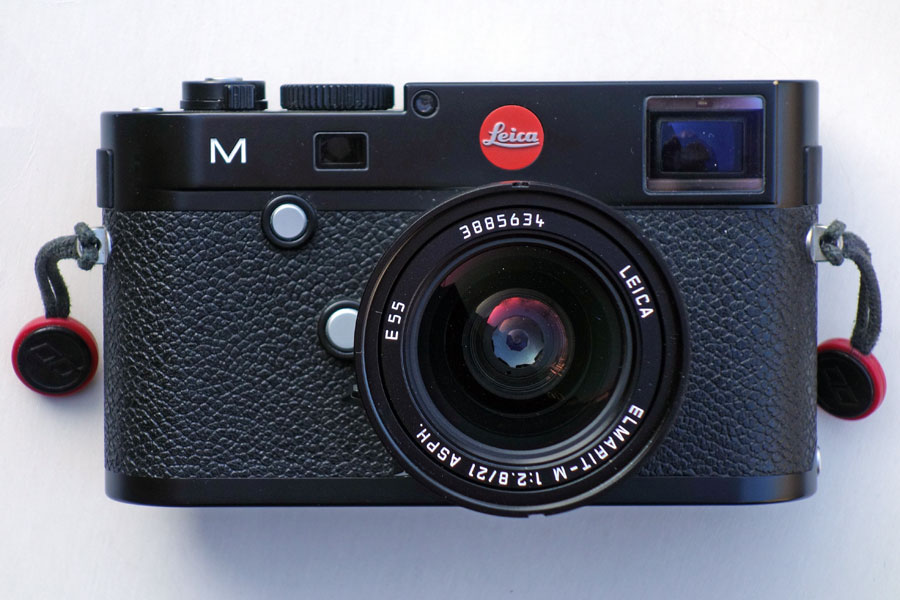 |
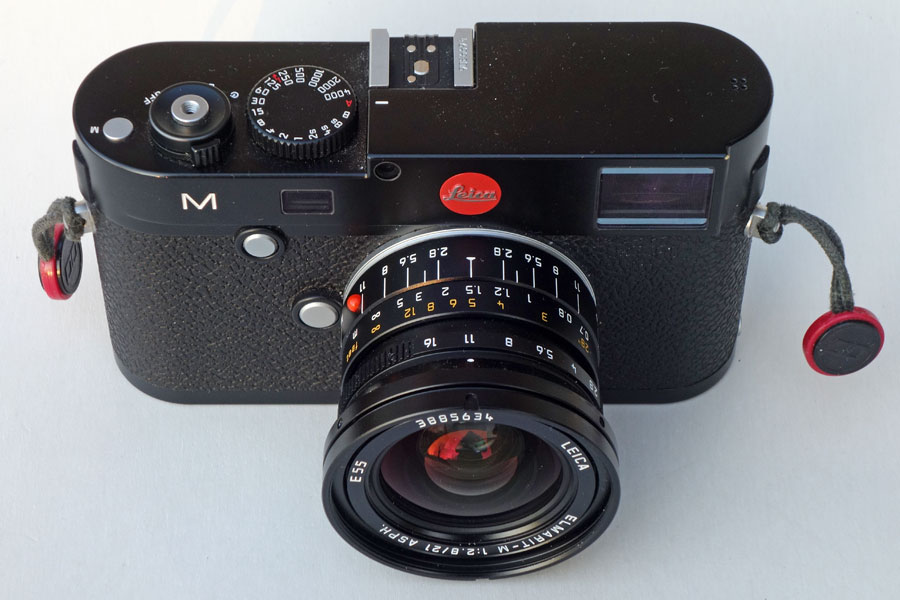 |
|
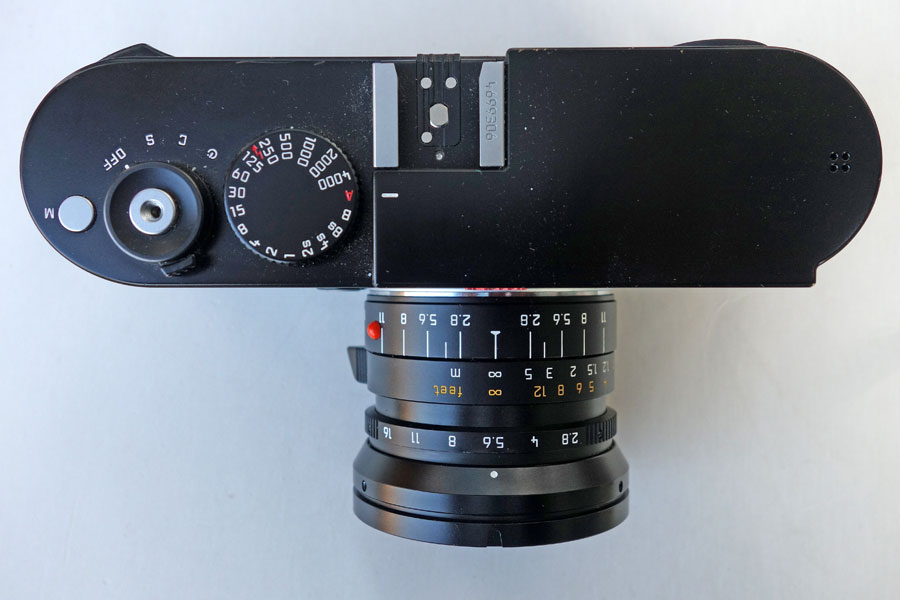 |
||
With Lens Hood |
||
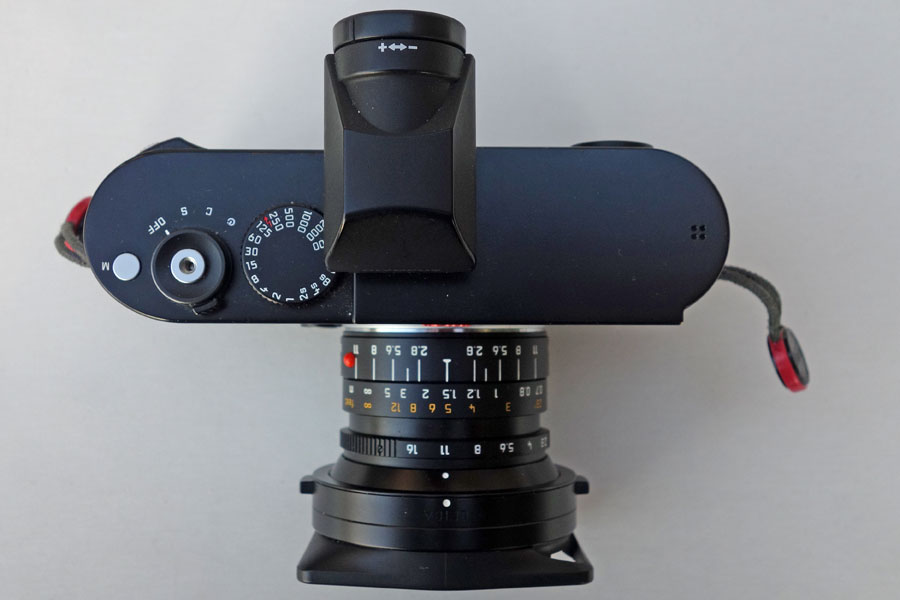 |
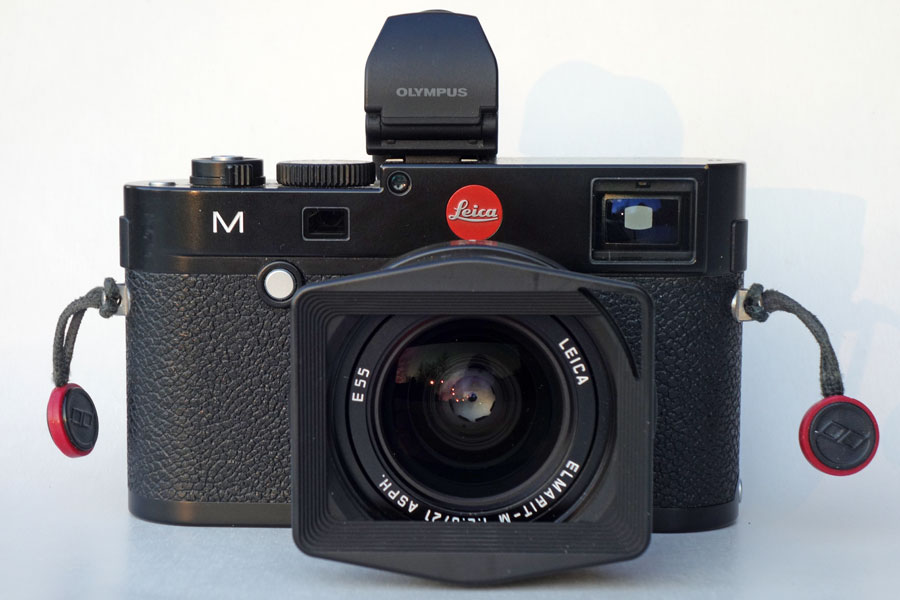 |
|
 |
 |
Photos: Leica M (Typ 240) with Leica Elmarit-M 21mm f/2.8 ASPH. (bottom right: with hood cap 14041)
See the appendix for photos of the unpacking.
Some Technical Data
| Model number | 11135 |
| Focal length | 21 (21.3) mm |
| Angle of view (35mm film) | 92° diagonal |
| Maximum aperture | 2.8 |
| f-stop range | 2.8-16 |
| Number of iris blades | 8 |
| Number of lenses/groups | 9/7 |
| Shortest distance | 0.7 m |
| Weight (Rockwell/Leica/myself) | 317 g / 300 g / 318 g |
| Length (overall/from flange) | 58 mm / 46 mm |
| Maximum diameter | 58 mm |
| Filter thread | 55 mm |
| Lens hood | 12592 (rectangular) |
| Hood cap | 14041 |
| Smallest object field / magnification | 1.044 mm x 696 mm / 1:29 (Leica), 1123 x 749 mm / 1:31 (calculated), 1050 mm / 1:29.3 (from photo) |
For more data, including detailed weights and measures, see Ken Rockwell's page on the Leica Elmarit-M 21mm f/2.8 ASPH. lens. For more complete data see also the respective page on Leicapedia.
DOF Table
| Distance (m) V |
Aperture
|
|||||
2.8 |
4 |
5.6 |
8 |
11 |
16 |
|
| 0.7 | 0.623-0.801 | 0.598-0.849 | 0.566-0.930 | 0.524-1.089 | 0.480-1.390 | 0.423-2.649 |
| 0.8 | 0.700-0.937 | 0.667-1.007 | 0.626-1.125 | 0.574-1.371 | 0.521-1.902 | 0.453-5.680 |
| 1 | 0.844-1.232 | 0.796-1.359 | 0.737-1.592 | 0.664-2.157 | 0.593-3.936 | 0.504-∞ |
| 1.2 | 0.979-1.560 | 0.914-1.773 | 0.835-2.202 | 0.742-3.489 | 0.652-13.73 | 0.545-∞ |
| 1.5 | 1.165-2.123 | 1.072-2.549 | 0.964-3.569 | 0.839-9.136 | 0.724-∞ | 0.593-∞ |
| 2 | 1.439-3.326 | 1.297-4.536 | 1.140-9.410 | 0.967-∞ | 0.815-∞ | 0.650-∞ |
| 3 | 1.880-7.670 | 1.641-20.56 | 1.393-∞ | 1.140-∞ | 0.932-∞ | 0.719-∞ |
| 5 | 2.491-∞ | 2.083-∞ | 1.695-∞ | 1.330-∞ | 1.052-∞ | 0.786-∞ |
| ∞ | 4.862-∞ | 3.394-∞ | 2.511-∞ | 1.774-∞ | 1.304-∞ | 0.913-∞ |
The data was taken from the Leica technical data sheet for this lens.
Simplified DOF Table
| Distance (m) V |
Aperture |
|||||
2.8 |
4 |
5.6 |
8 |
11 |
16 |
|
| 0.7 | 0.62-0.80 | 0.60-0.85 | 0.57-0.93 | 0.52-1.09 | 0.48-1.39 | 0.42-2.65 |
| 0.8 | 0.700-0.94 | 0.67-1.01 | 0.63-1.13 | 0.57-1.37 | 0.52-1.90 | 0.45-5.68 |
| 1 | 0.84-1.23 | 0.80-1.36 | 0.74-1.59 | 0.66-2.16 | 0.59-3.94 | 0.50-∞ |
| 1.2 | 0.98-1.56 | 0.91-1.77 | 0.84-2.20 | 0.74-3.49 | 0.65-13.7 | 0.55-∞ |
| 1.5 | 1.17-2.12 | 1.07-2.55 | 0.96-3.57 | 0.84-9.14 | 0.72-∞ | 0.59-∞ |
| 2 | 1.44-3.33 | 1.30-4.54 | 1.14-9.41 | 0.97-∞ | 0.82-∞ | 0.65-∞ |
| 3 | 1.88-7.67 | 1.64-20.6 | 1.39-∞ | 1.14-∞ | 0.93-∞ | 0.72-∞ |
| 5 | 2.49-∞ | 2.08-∞ | 1.70-∞ | 1.33-∞ | 1.05-∞ | 0.79-∞ |
| ∞ | 4.86-∞ | 3.39-∞ | 2.51-∞ | 1.77-∞ | 1.30-∞ | 0.91-∞ |
A few simple Rules
|
|
|
|
For optimal sharpness, I would not use the closest distance setting that extends to infinity. For f/2.8 and f/4, I would therefore, based on my preliminary experiences, use a setting between 5 m and infinity (the previous owner suggested to use 5 m), and for f/5.6 and f/8, a distance setting of 5 m should be OK.
Color Shading and Vignetting
Photos: Calibration shots with Leica Elmarit-M 21mm f/2.8 ASPH (taken with EV +1).
One might debate, which setting results in the least color shift. Vignetting improves when automatic or suitable manual settings are being used. The vignetting in the lower right corner might be an artifact.
Conclusion: This lens should be used in automatic mode, although there is still a slight magenta color shading on the left side; this was also reported on the Internet.
My status: "Lens Detection" set to "Automatic."
Sample Images
Here are a few samples taken with the Leica Elmarit-M 21mm f/2.8 ASPH. lens (click the images to view the unprocessed original files in a new window). The photos were taken with lens detection set to "Automatic".
 |
 |
|
 |
 |
|
f/2.8 |
f/8 |
|
 |
||
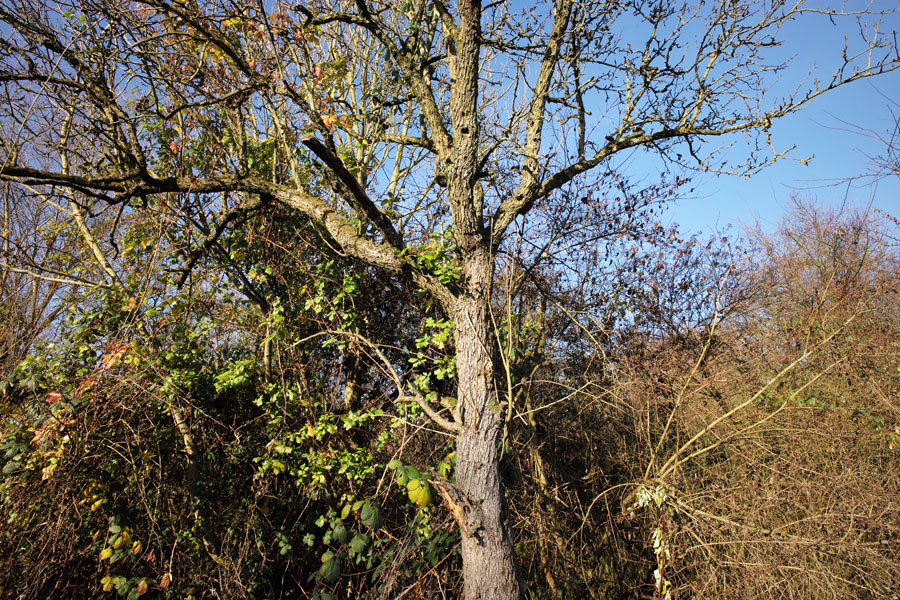 |
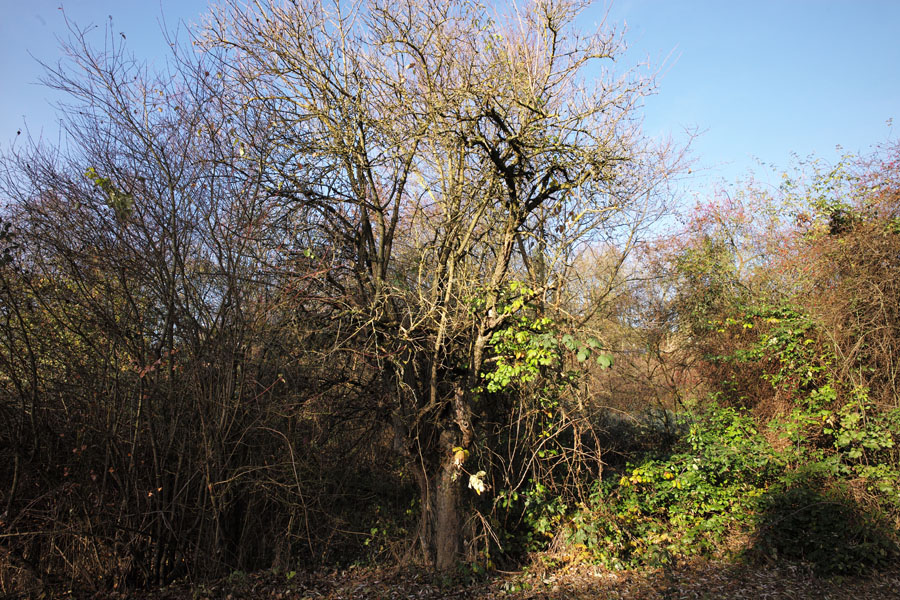 |
|
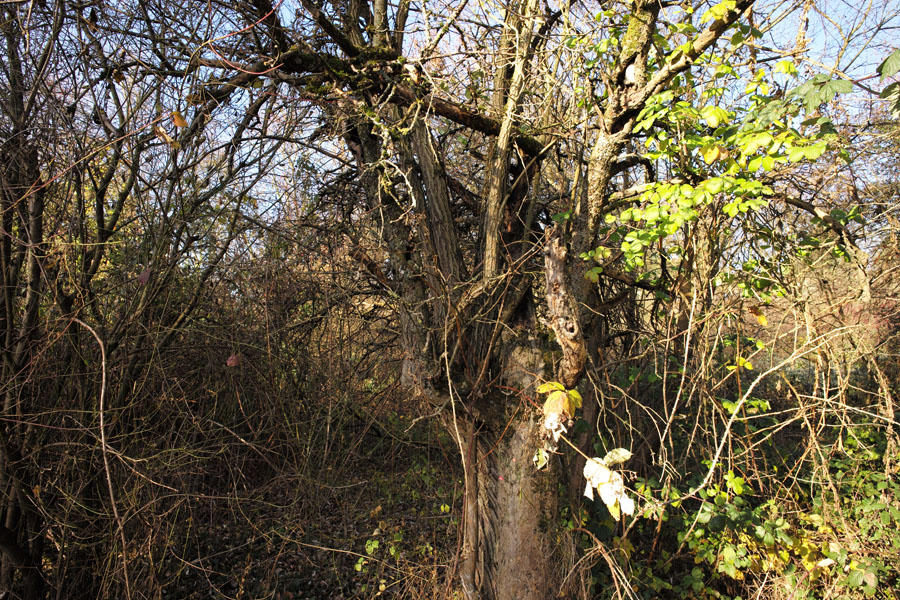 |
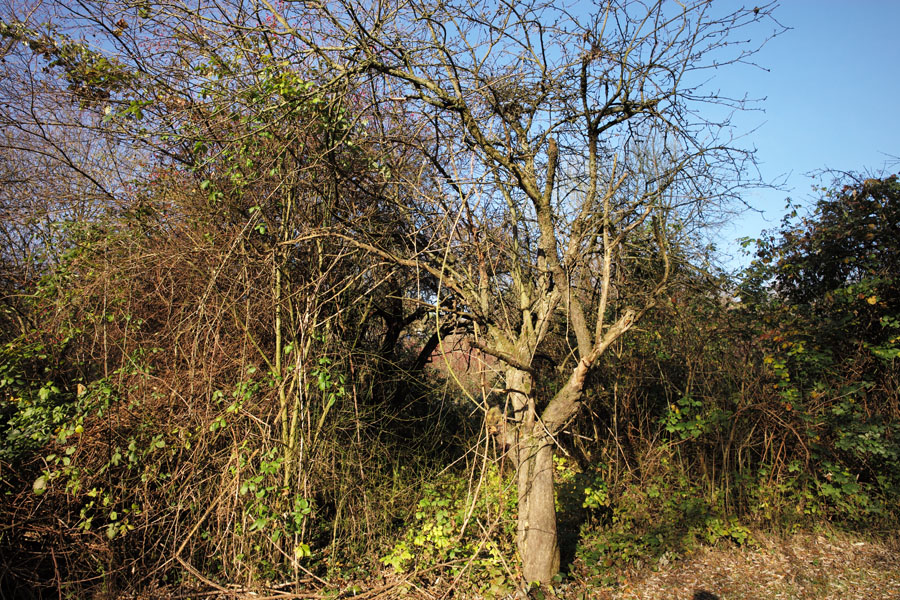 |
|
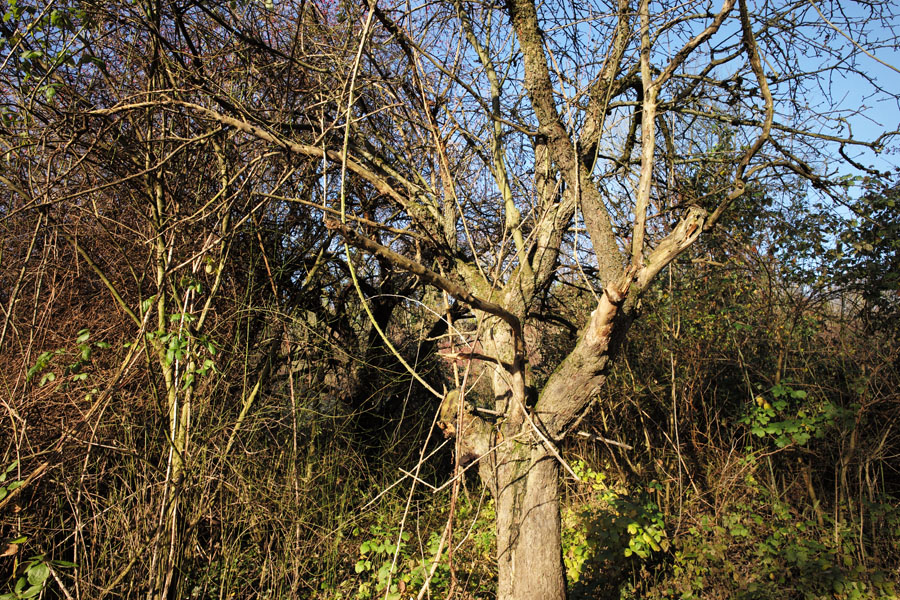 |
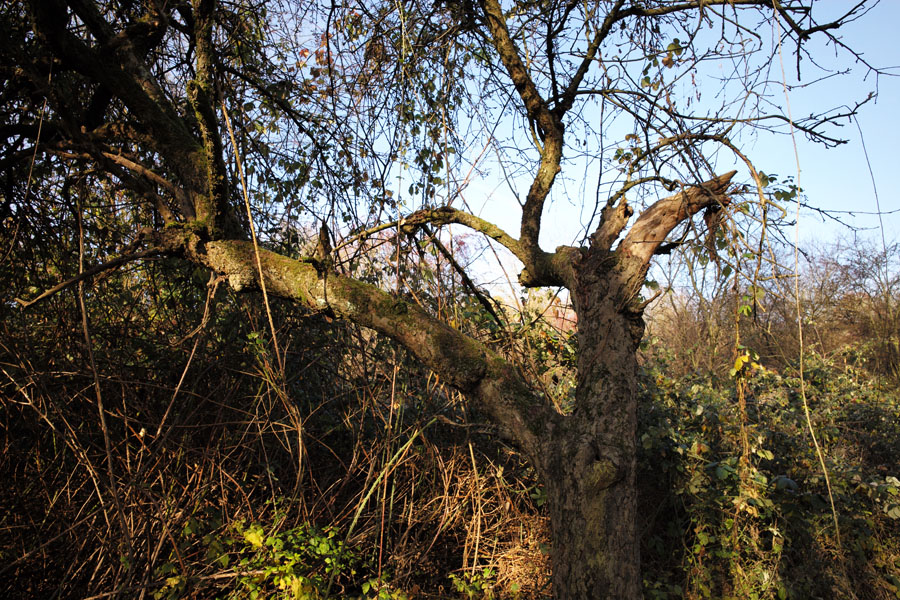 |
|
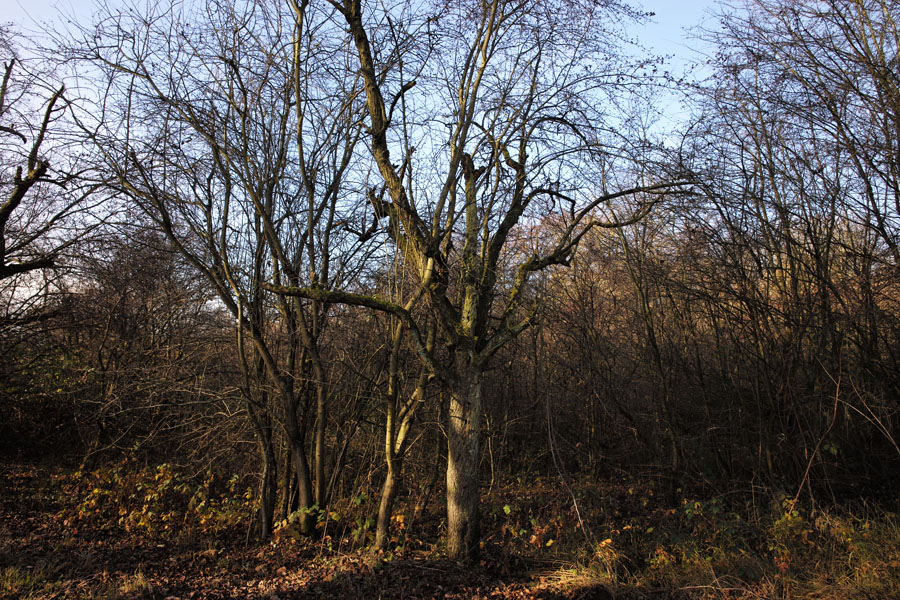 |
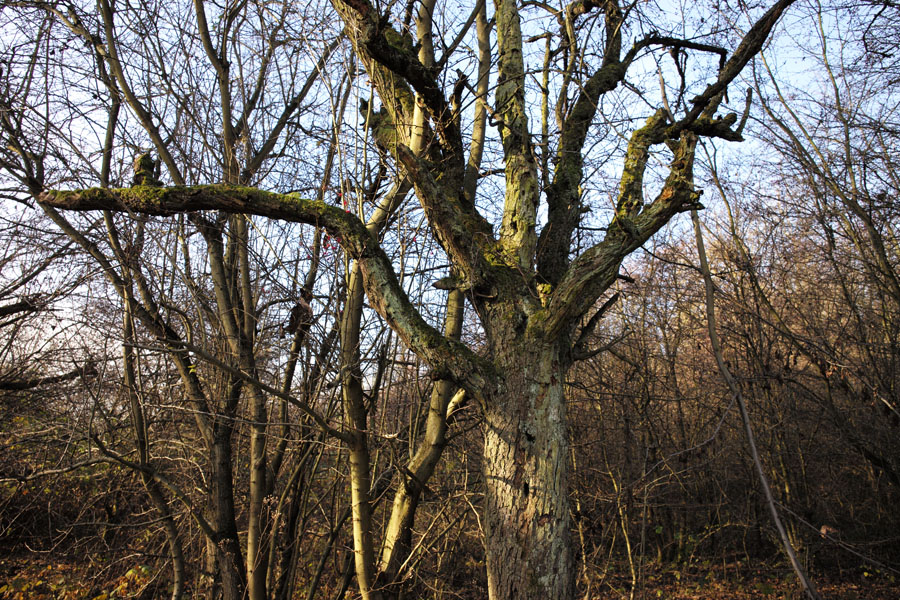 |
|
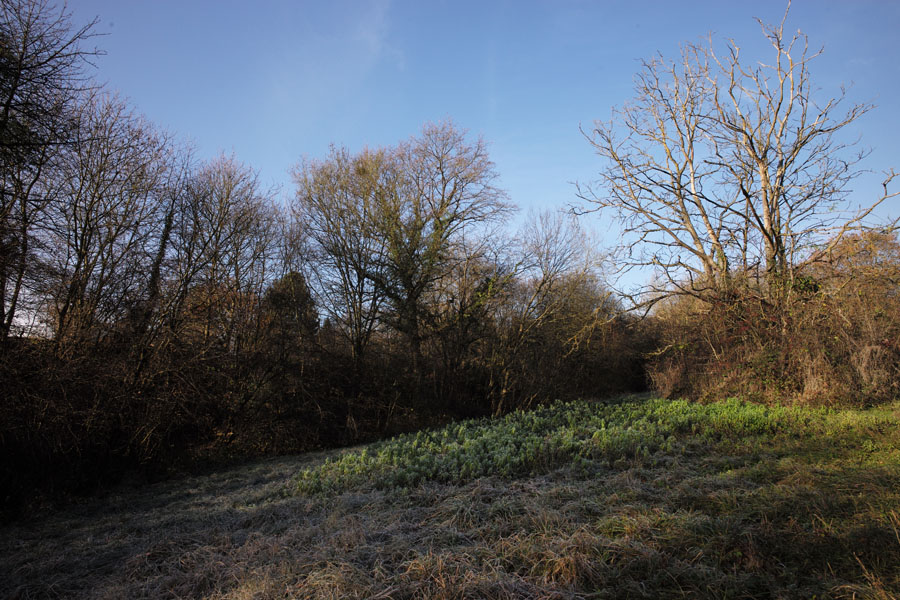 |
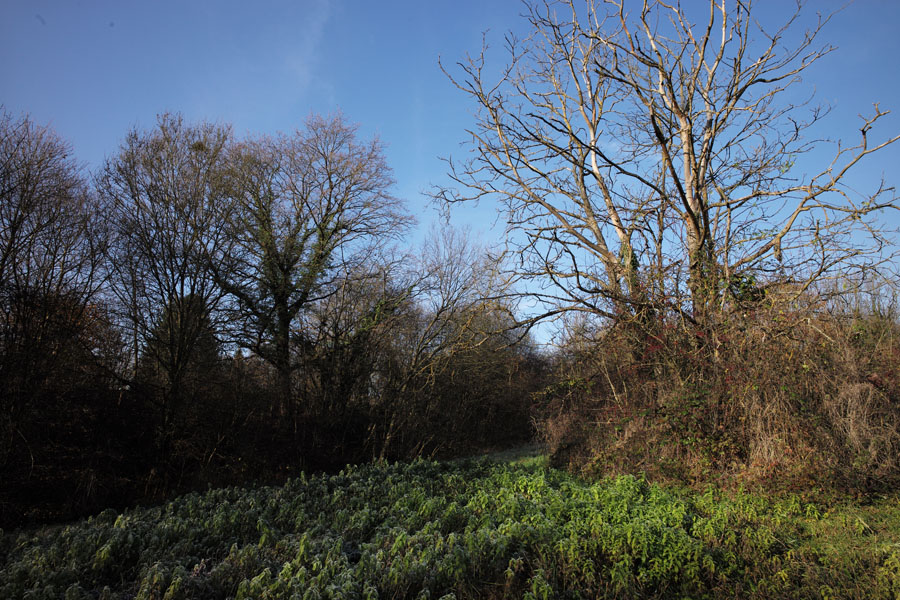 |
|
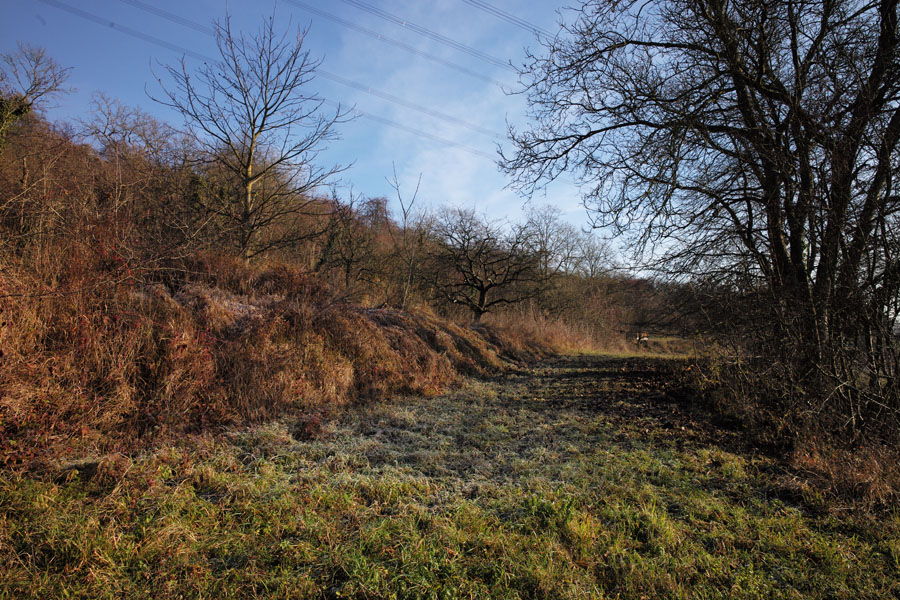 |
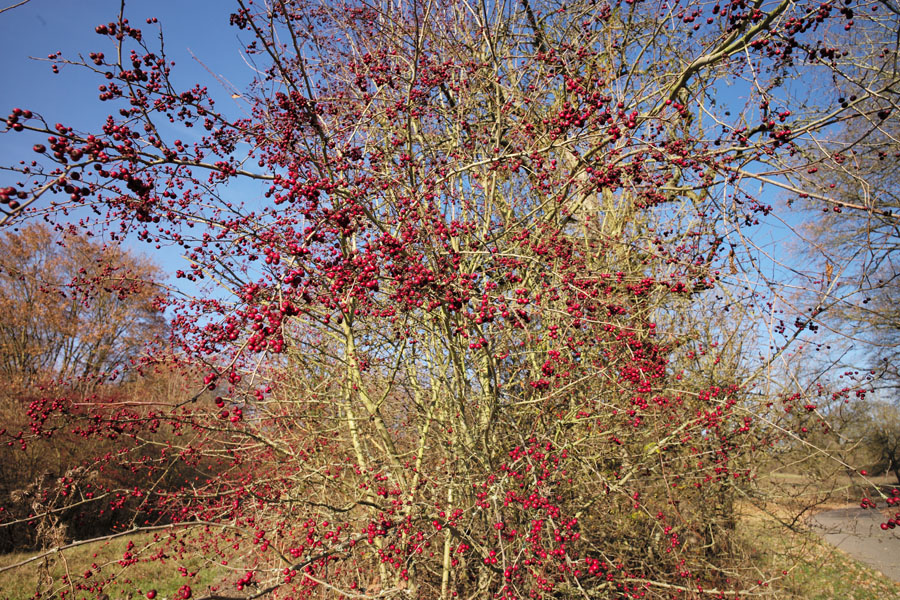 |
|
 |
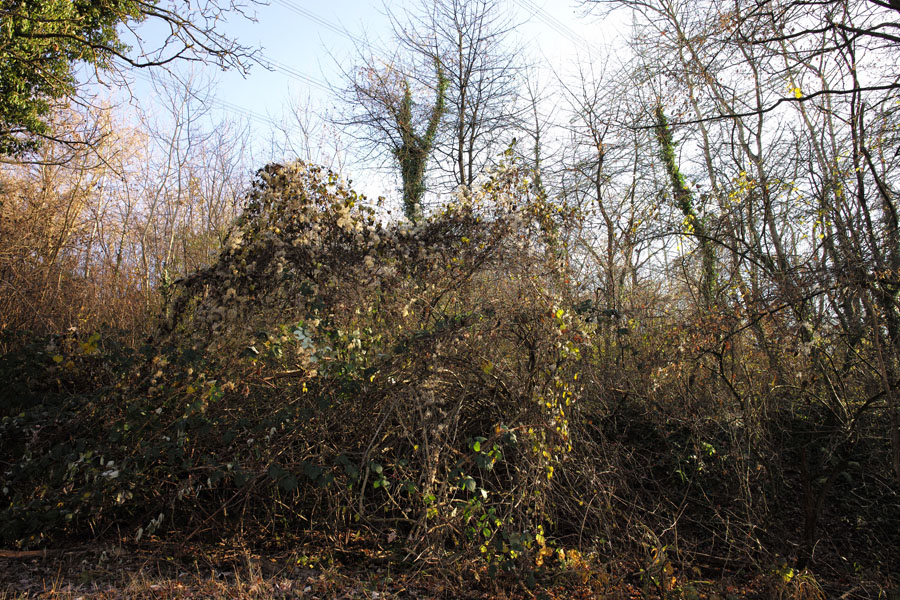 |
|
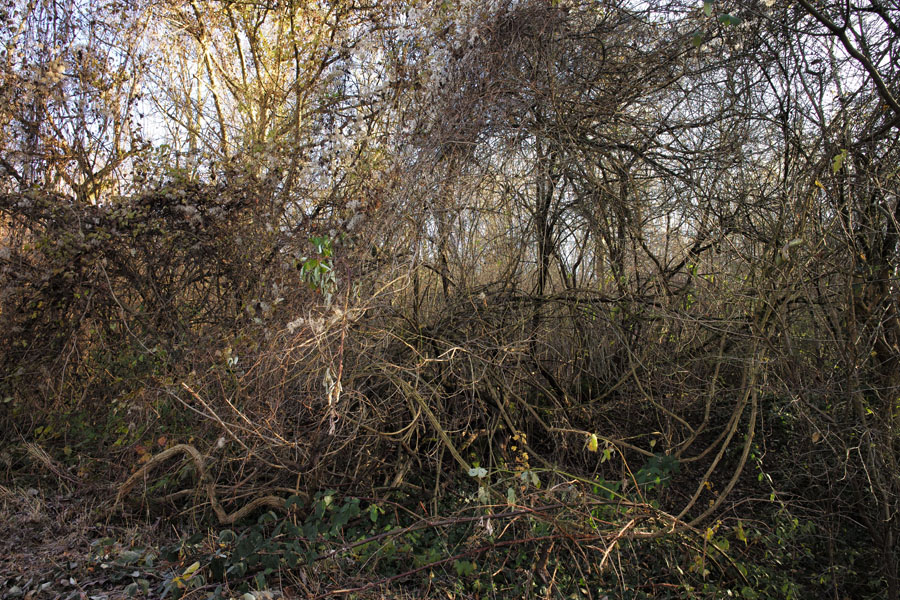 |
 |
|
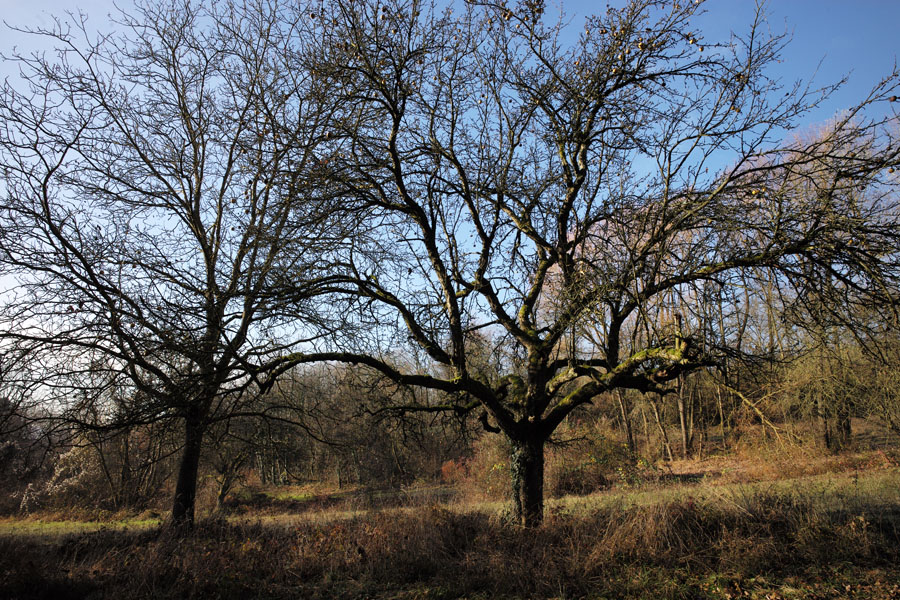 |
 |
|
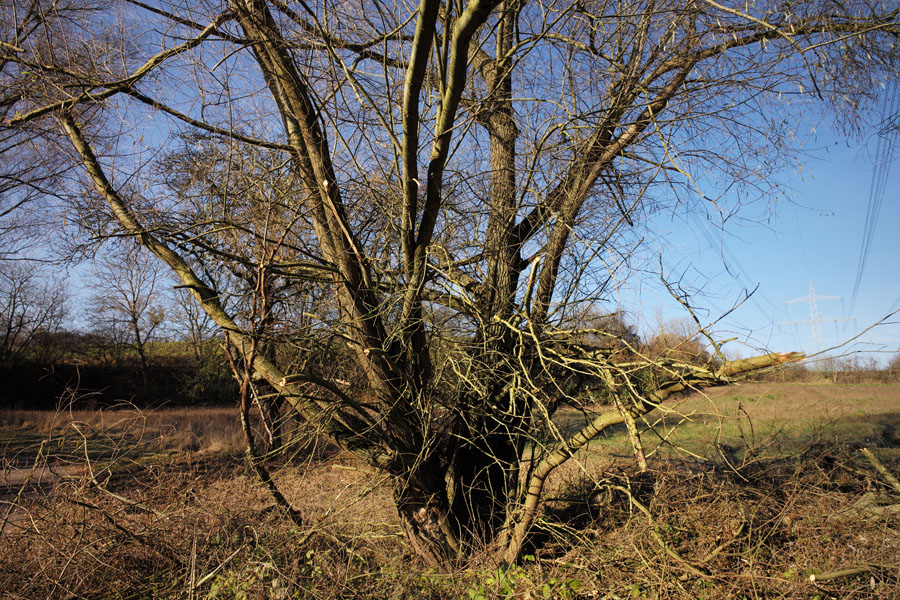 |
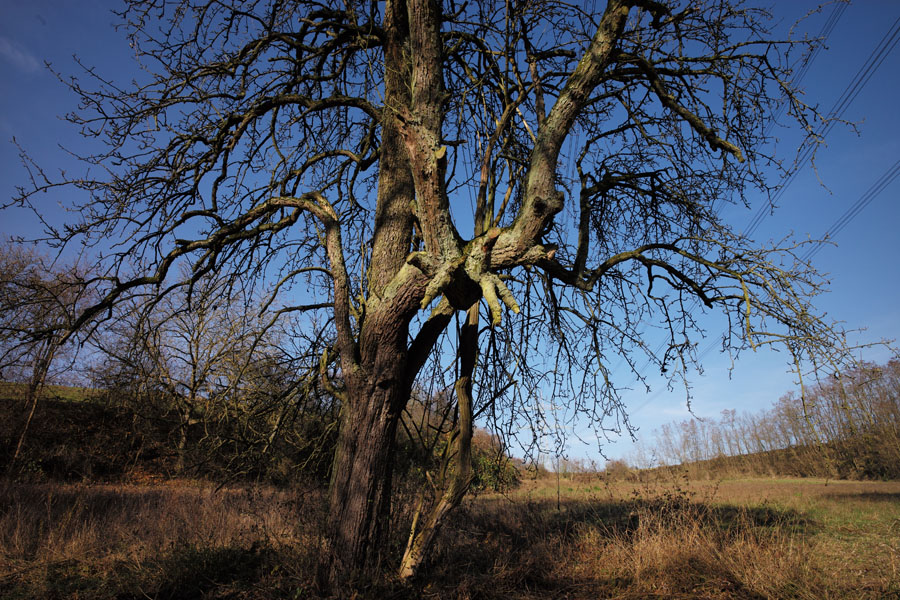 |
|
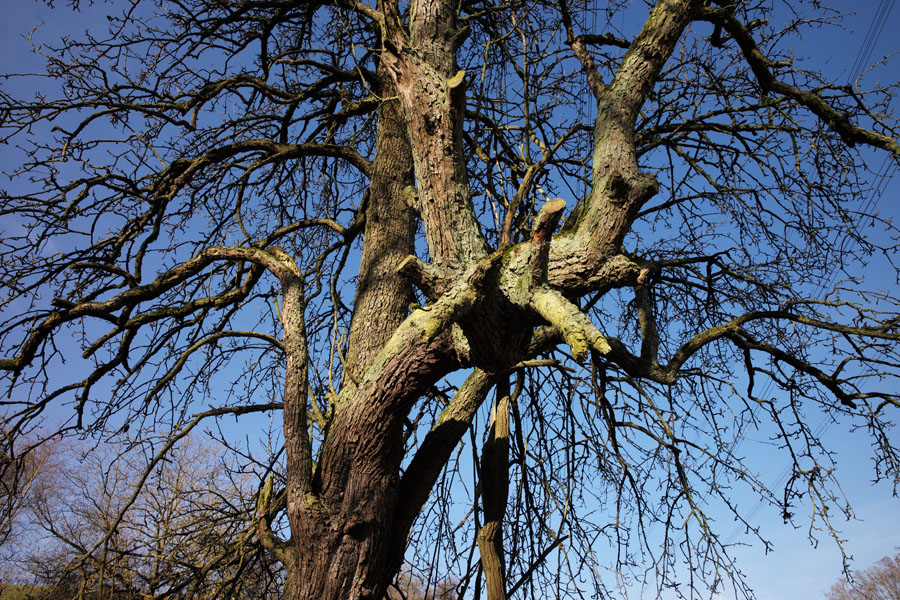 |
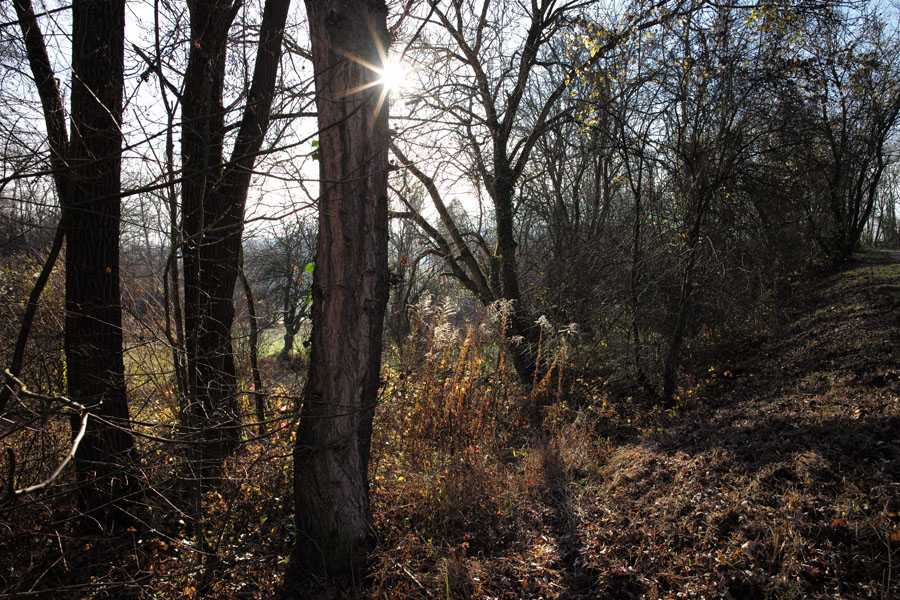 |
|
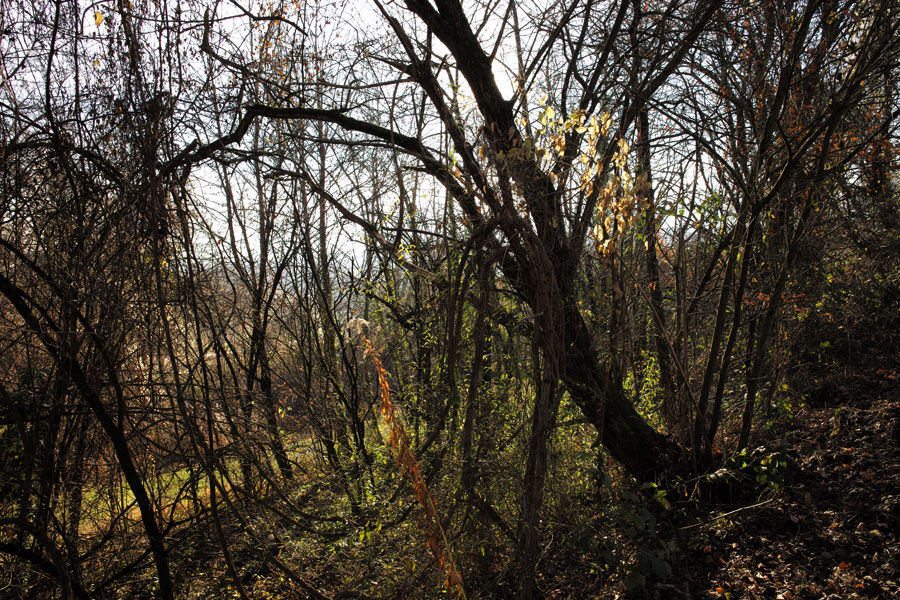 |
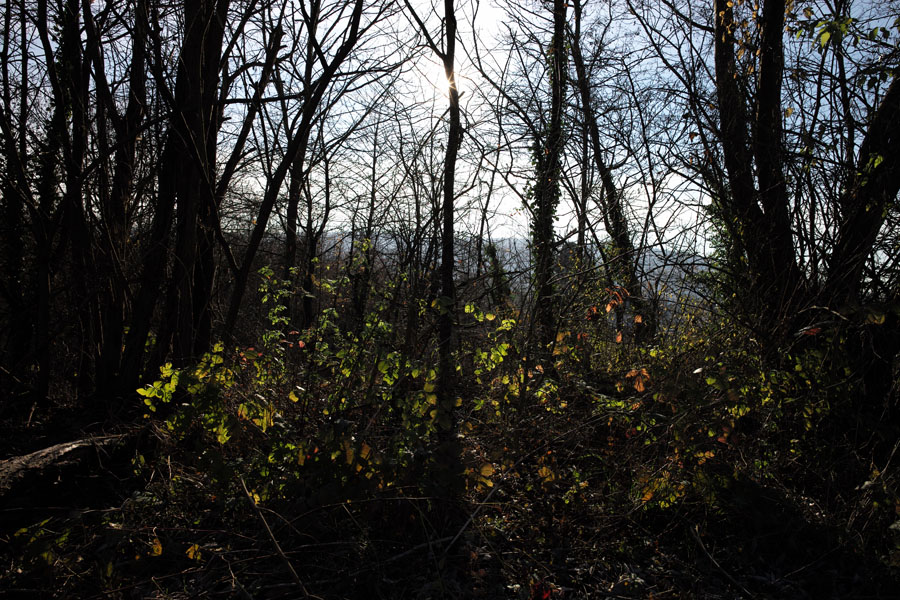 |
|
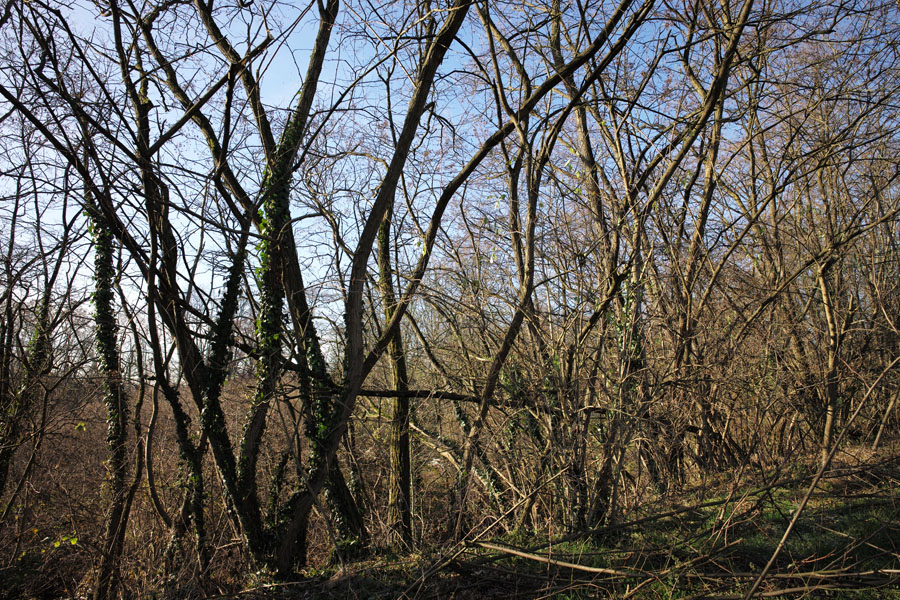 |
 |
|
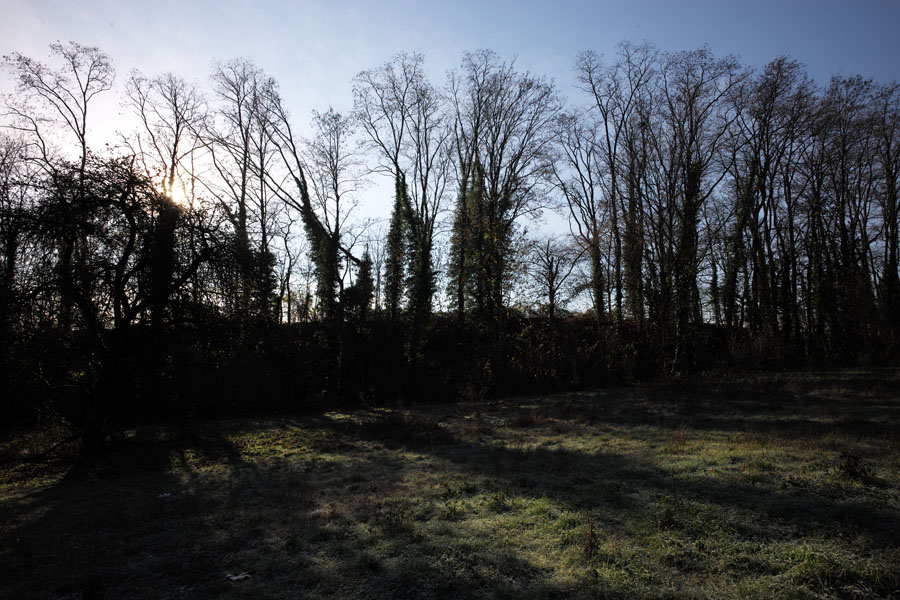 |
 |
|
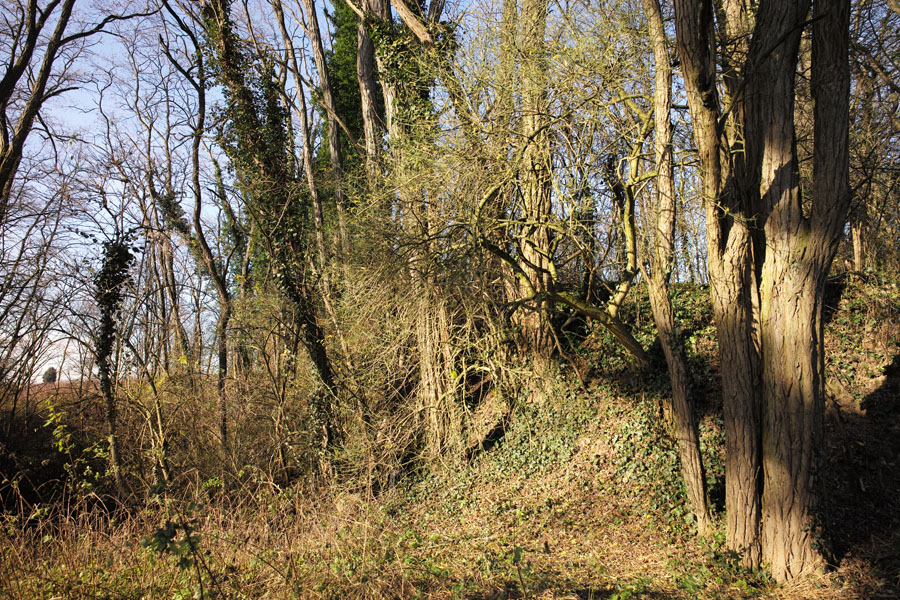 |
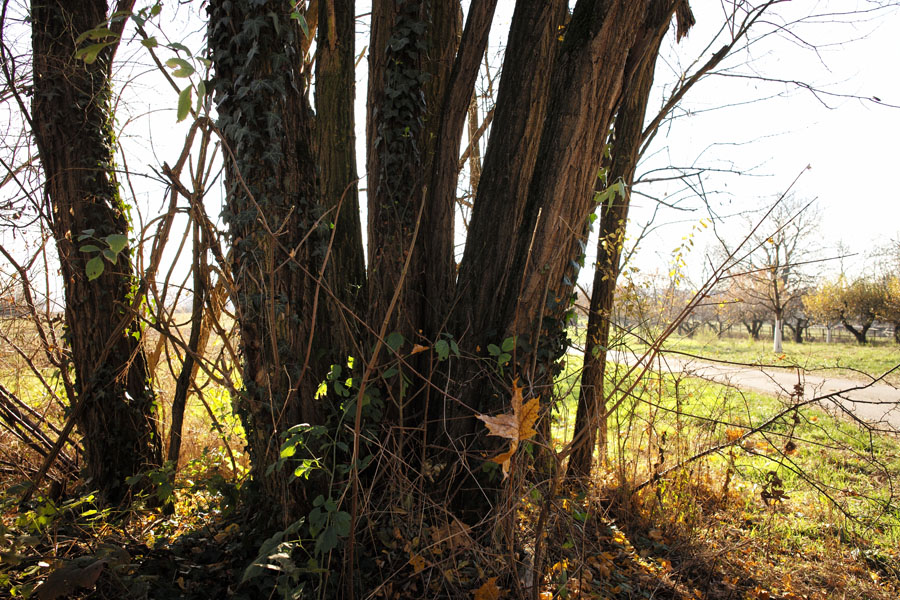 |
|
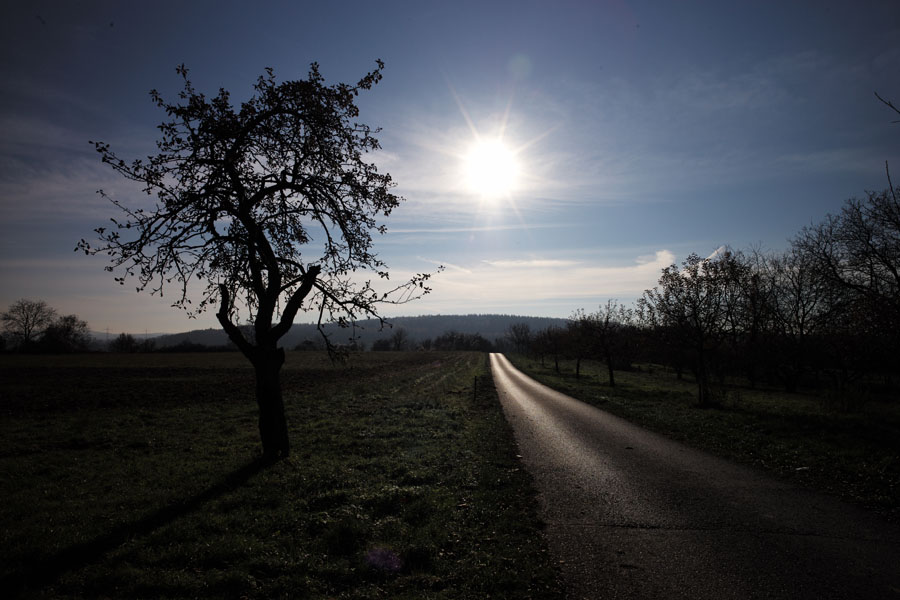 |
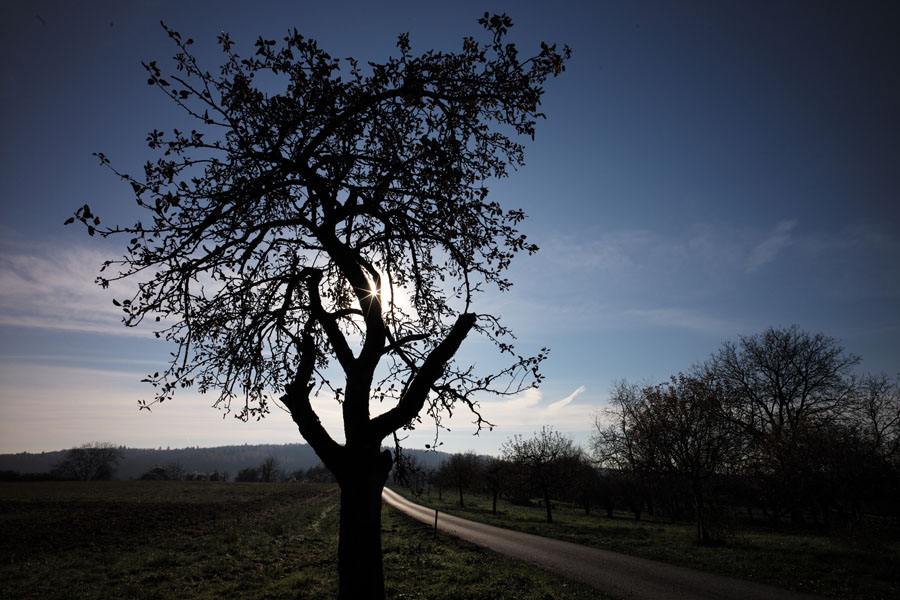 |
|
 |
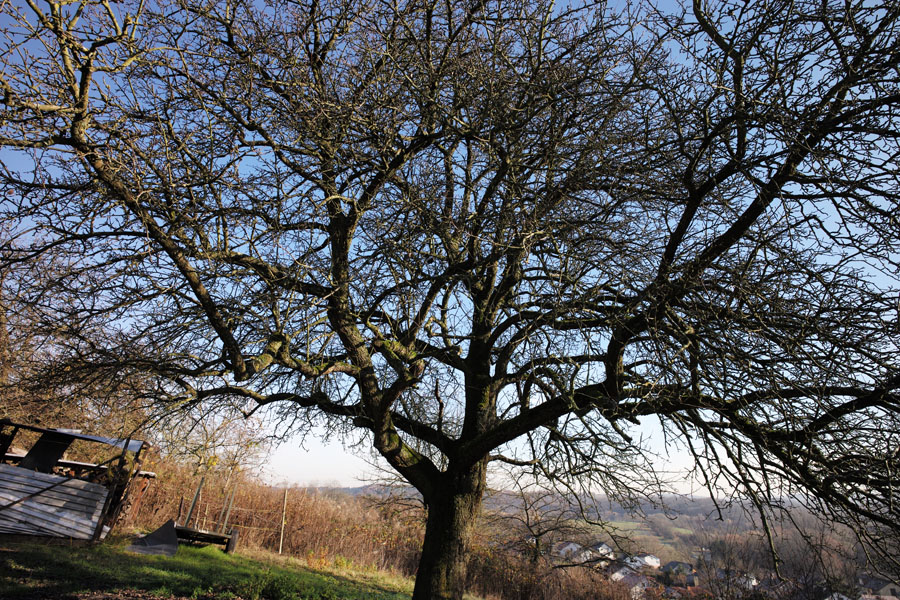 |
|
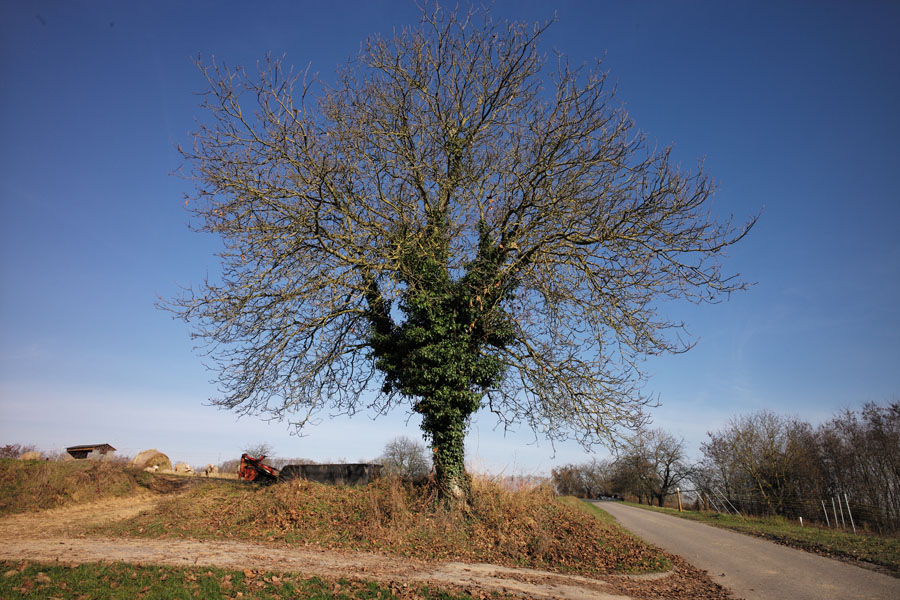 |
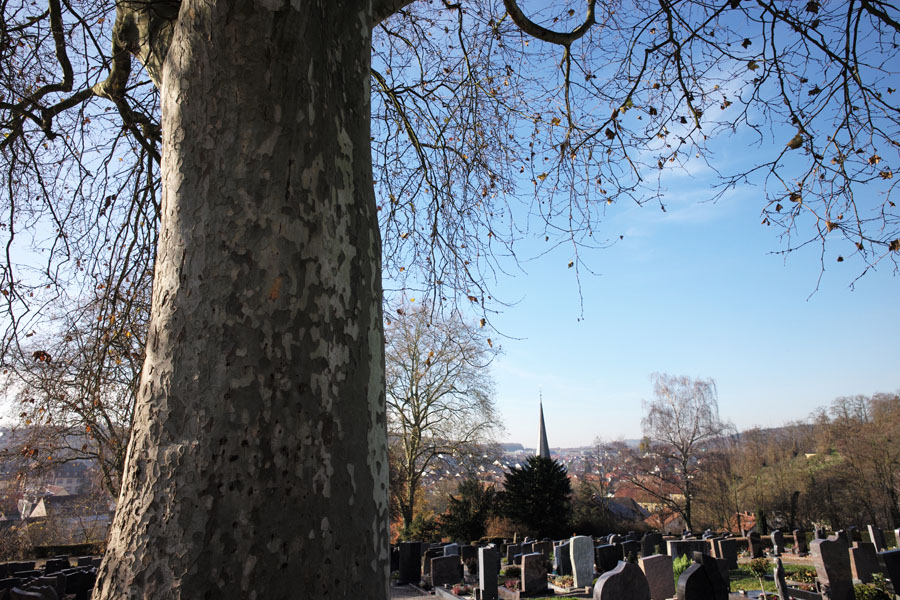 |
Some Sun Stars
 |
 |
|
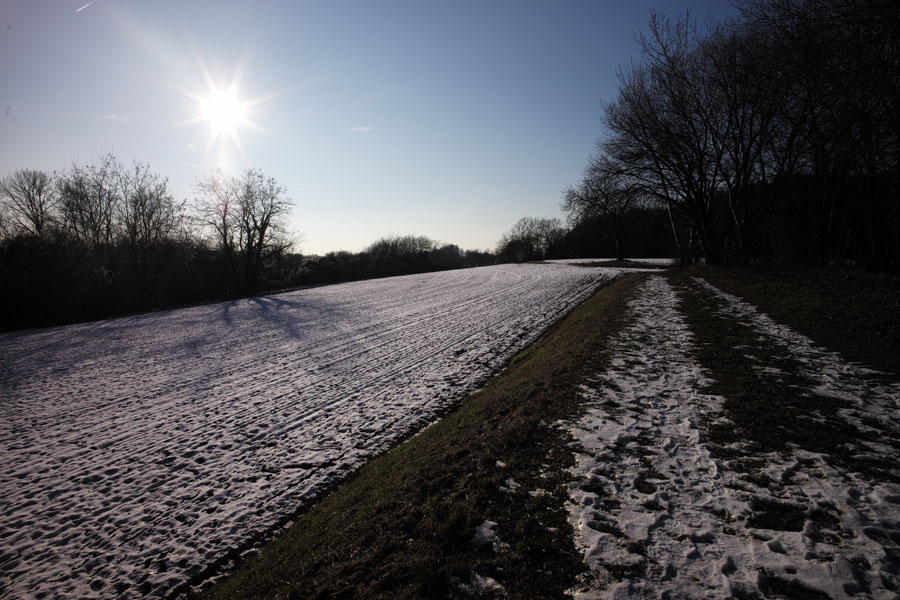 |
 |
|
 |
 |
|
 |
 |
|
 |
 |
|
Already presented above... |
Already presented above... |
Close-Up Behavior
Smallest Object Field / Magnification
| Smallest object field/width | 1.044 mm x 696 mm (Leica), 1123 x 749 mm (calculated), 1050 mm (from photo*) |
| Magnification | 1:29 (Leica), 1:31 (calculated), 1:29.3 (from photo*) |
*) See photo below:
w = 1050 mm; magnification = 35.8/1050 = 1:29.3 (1:30)
Photo: Leica Elmarit-M 21mm f/2.8 lens (1050 mm)
With Quenox Quenox Extension Tube for Leica M
Distance > |
Infinity | 0.7 m (closest) |
| Smallest object width | 80 mm* | 72 mm* |
| Magnification | 0.45 = 1:2.3 => approx. 1:2.3 | 0.50 = 1:2.0 => approx: 1:2.0 |
*) See photos below:
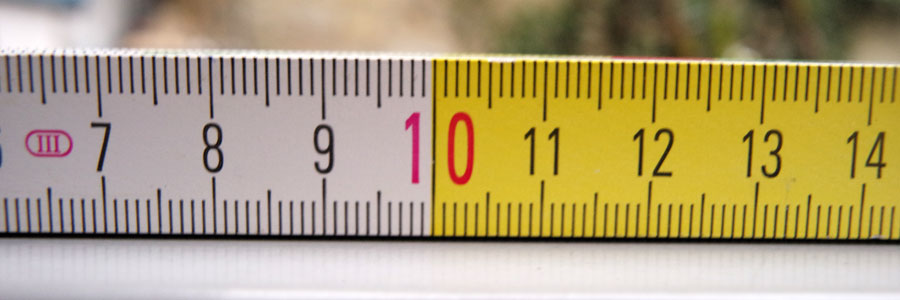 |
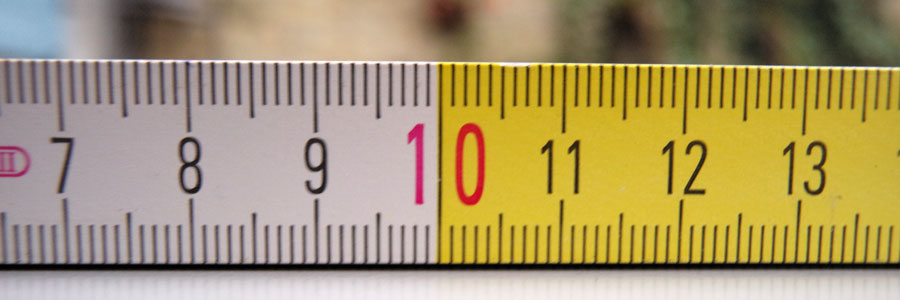 |
Photos: Test shots with Leica Elmarit-M 21mm f/2.8 and Quenox Extension Tube for Leica M; distance set to infinity (left) or closest distance (right)
Closest Distance
The following photos are meant to demonstrate the lens' close-up behavior (automatic lens detection).
 |
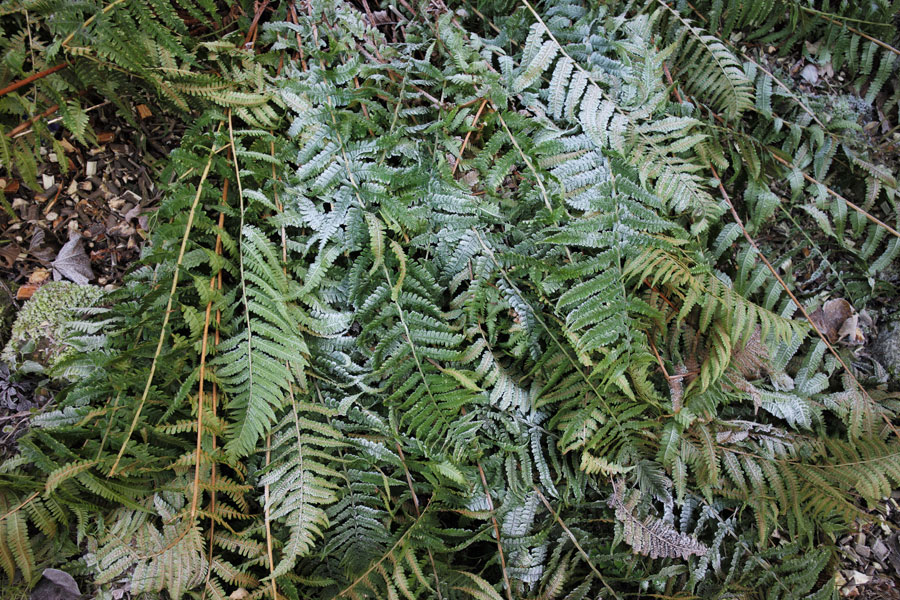 |
As a wide angle lens, the Leica Elmarit-M 21mm f/2.8 lens is not a "winner" in the close-up realm. This improves, however, dramatically if you use an extension tube like the Quenox Extension Tube for Leica M, which is a replacement for the now "extinct" Leitz OUFRO (16469Y) (1 cm). You get a magnification of up to 1:2 with this lens, but you have to get very close to the subject...
Here are a few samples taken with the Quenox extension tube (no files in original size):
 |
 |
|
Distance set to closest value |
Distance set to infinity |
|
 |
 |
|
Distance set to closest value |
Distance set to infinity |
|
 |
 |
|
Distance set to infinity |
Distance set to closest value |
|
 |
||
Distance set to infinity |
Note: For close-up shots you better remove the lens hood to avoid shading.
Conclusions
Disclaimer: I am not a lens expert who sees marked differences between various Leica and/or other lenses. I can check for soft corners, find differences in color rendition, and, in rare cases, may discover a "3D look," but that's all. Please regard therefore my conclusions as the verdict of a "layman."
My test shots are not "optimized for wide angle lenses." These are just the motives that I use over and over for taking first photos with a new lens. Therefore, other motives might better demonstrate the strengths of this lens. Anyway, when using f/5.6 and smaller openings, this is a wonderful lens. However, I am still in the process of understanding and finding out how I can use the wide openings of f/2.8 to f/4 to make the most out of them. I will discuss my findings on a separate page (in preparation).
Links
- Leica Elmarit-M 21mm f/2.8 ASPH. (Ken Rockwell): www.kenrockwell.com/leica/21mm-f28-asph.htm
- 21mm f/2.8 ASPH Elmarit-M (Leicapedia): www.l-camera-forum.com/leica-wiki.en/index.php/21mm_f/2.8_ASPH_Elmarit-M
- Leica Elmarit-M 1:2,8/21 mm ASPH. (Messsucherwelt, Claus Sassenberg): www.messsucherwelt.com/?page_id=4133
- Leica Elmarit-M 1:2,8/21 mm ASPH. - Review (Leica Review): www.leica-review.com/reviews-1/leica-elmarit-m-21mm-asph-review
Appendix: Unpacking
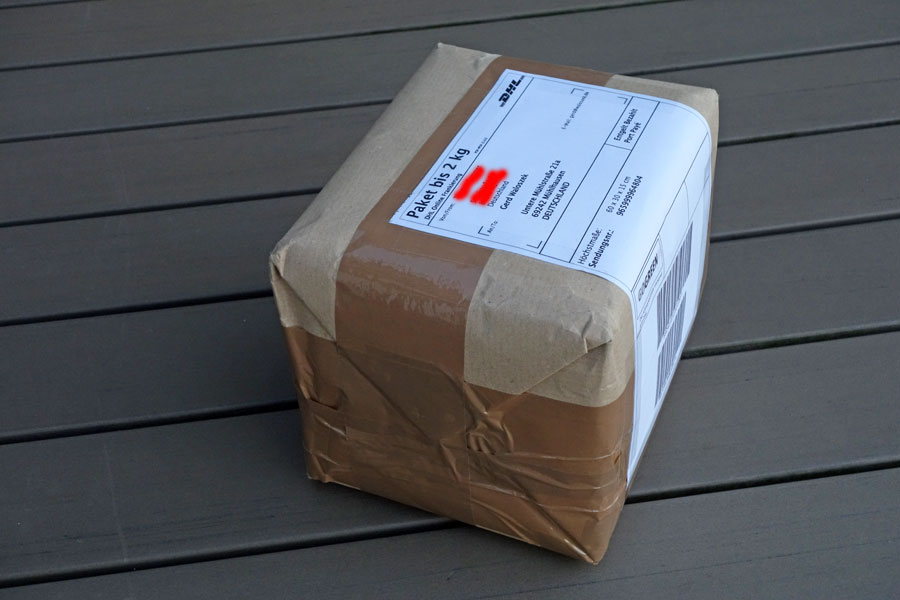 |
 |
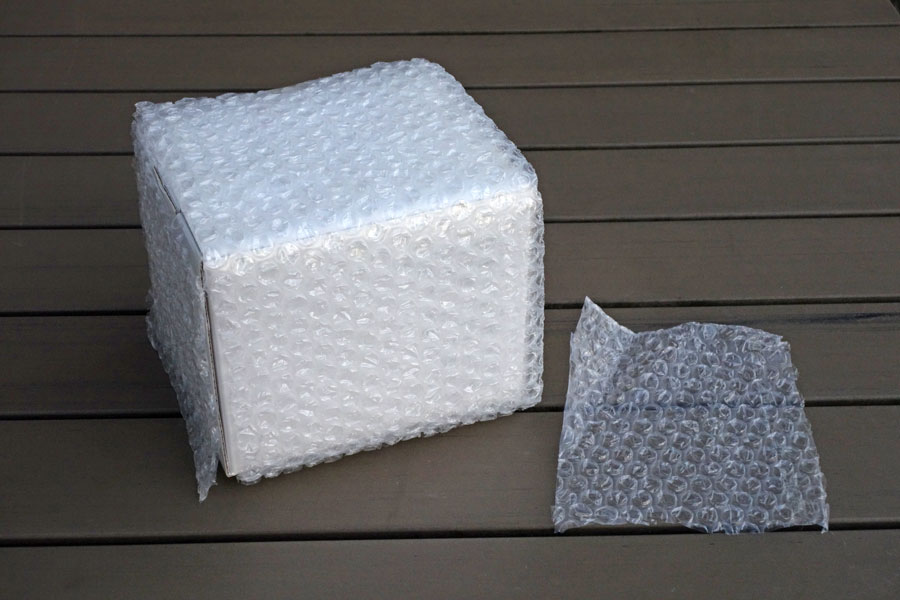 |
||
Oh my God! |
||||
 |
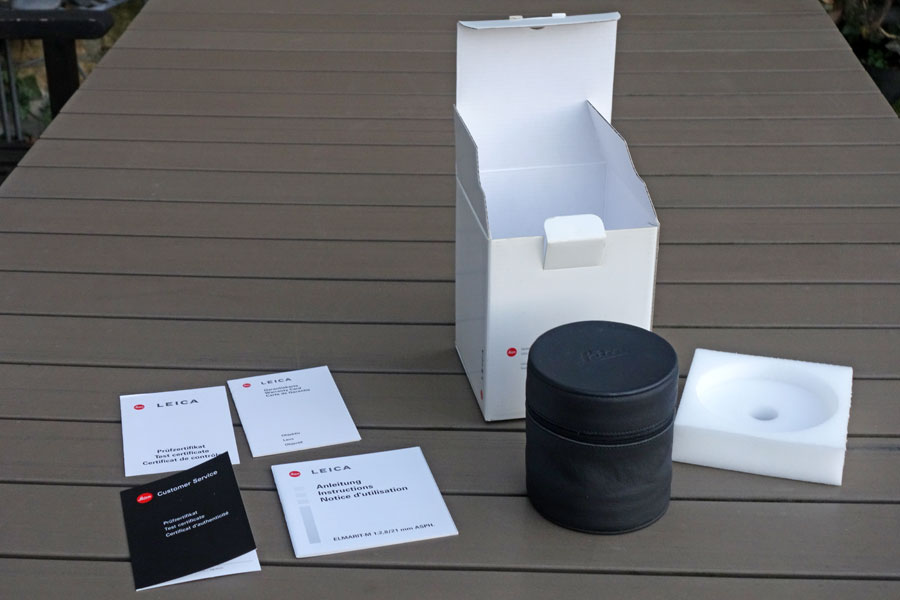 |
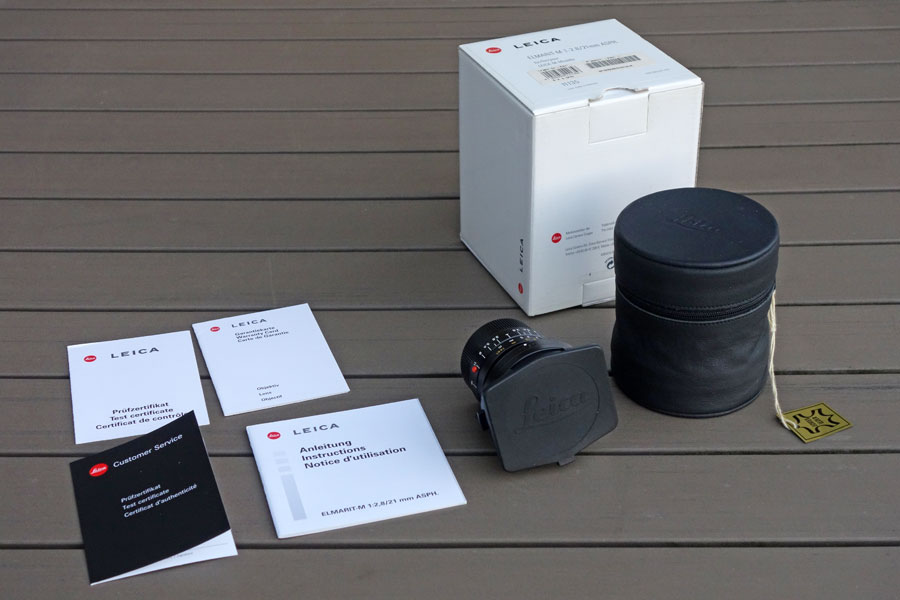 |
||
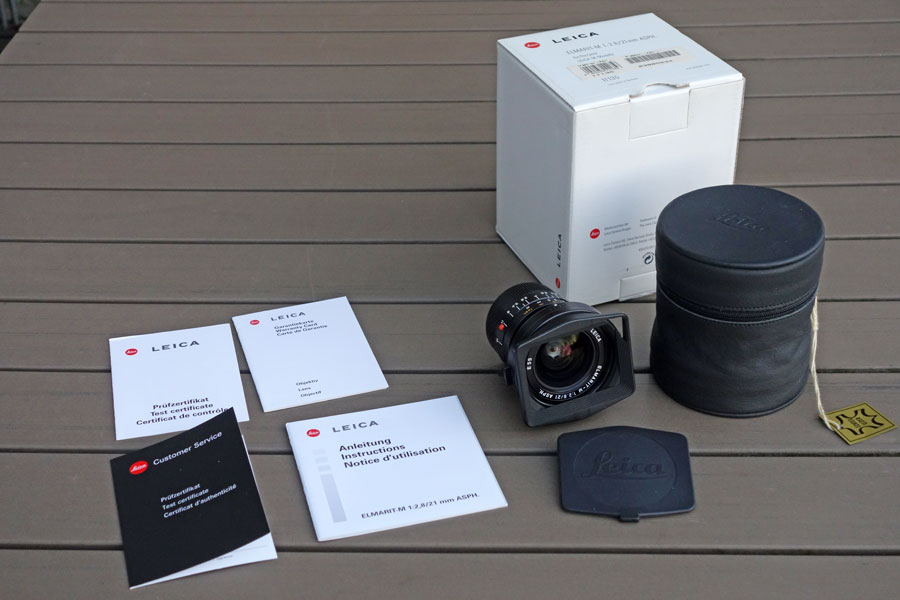 |
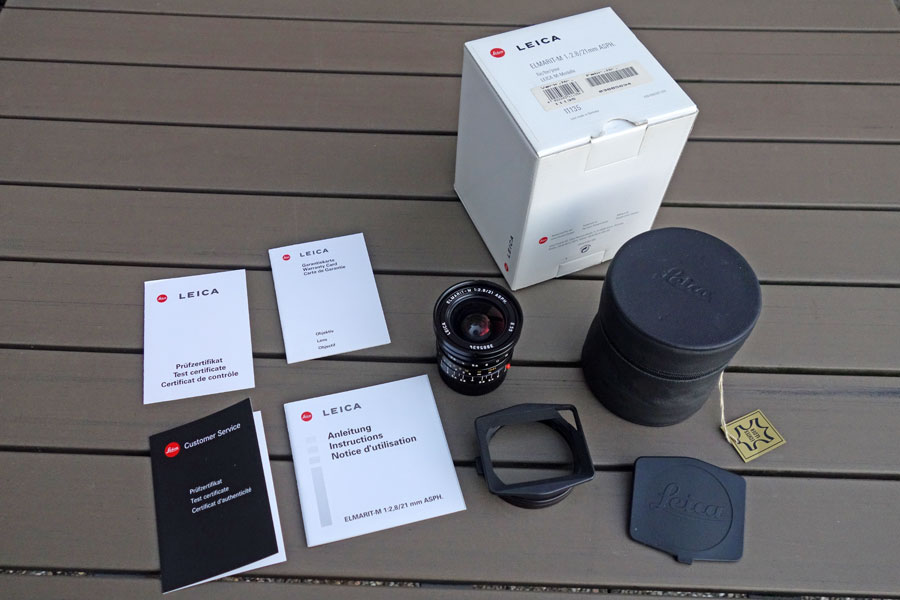 |
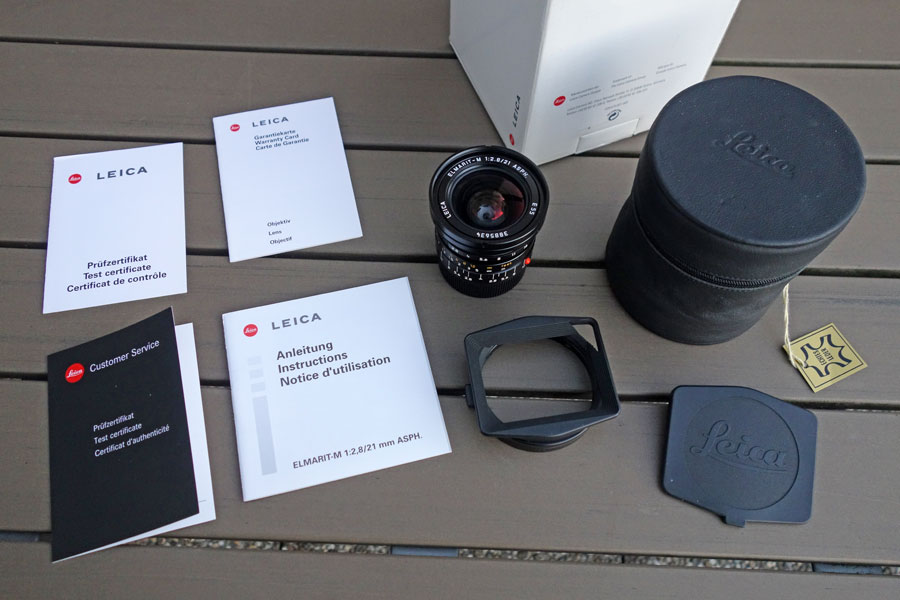 |
Also included is a lens cap (not shown, it's still in the bag...).
| 04.07.2024 |

